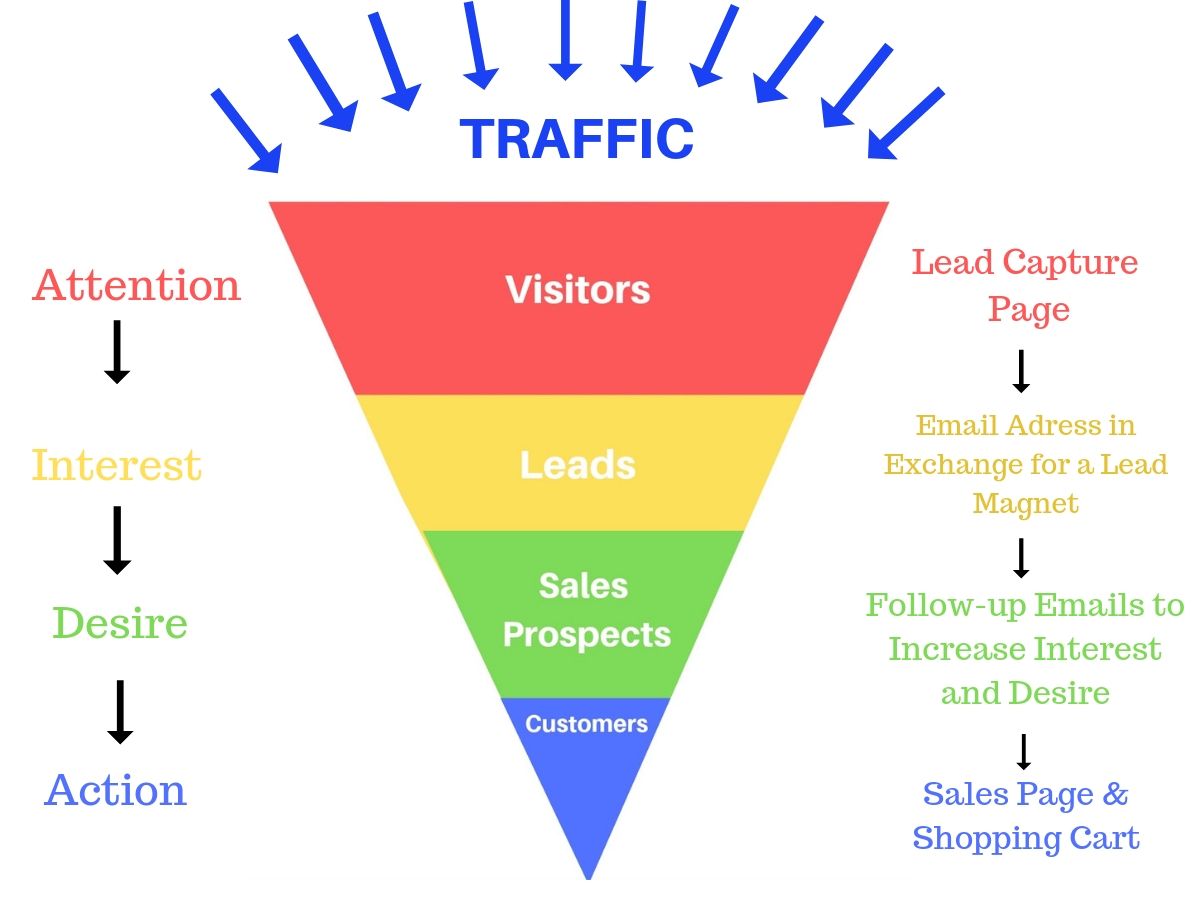
Marketing metrics are indicators used to measure the results of the campaigns you run across your marketing channels. By tracking the main ones - ranging from the number of visitors to the volume of sales - you can identify the impact of your strategies on your company's bottom line.
Do you know what the most important metrics are for your company? This question may seem obvious, but when it comes down to it, many companies still think that the volume of people who follow their social channels is important, without knowing what returns that is bringing them.
Unfortunately, for the most part, these numbers are merely vanity metrics. There are a number of better marketing metrics that we can look at to determine whether or not your strategies are contributing to the company's results....
What do marketing metrics represent?
Marketing metrics are the first thing to consider when developing a plan and strategies for an online marketing campaign. They are represented by indicators that help to measure the success of a specific marketing campaign.
With the data, we are able to study each stage of a marketing campaign carefully, without having to resort to guesswork to make important decisions - ultimately, it allows us to monitor and compare marketing efforts in a practical and direct way.
Knowing how to use marketing metrics is crucial to success. Contrary to what many think, metrics should not be evaluated only at the beginning and end of a campaign. They need to be examined during all stages of any marketing effort, to ensure you are making the most of your budget.
The main functions of metrics are as follows:
- Pointing out the positive and negative points of a marketing campaign
- Assistance for decision making and investments
- Aid for the improvement of strategies
- Decrease the level of uncertainty
- Indification of ROI (Return on Investment) in a more objective way
- Measurement of performance of each campaign
Social Metrics vs Business Metrics
There are a wide range of marketing metrics that can be assessed. To understand the best indicator or the best options among all the possible ones for your business, it is necessary to understand the purpose of your marketing campaign. Without a defined goal, you will not know if the campaign is on track or if the campaigns were effective.
To determine your goal, first you must understand the difference between social metrics and business metrics:
Social Metrics
Social metrics relate to the brand's goals on social media. Each company has its own motivation to develop content on these channels and, according to each one, different goals will be analysed.
The main data observed in the social metrics are:
- Reach: reach is a metric visible on social networks like Facebook, Instagram, Twitter, LinkedIn. We consider it as a base goal, to see how many people are receiving the content that we produce.
- Engagement: this metric tells us the total number of people who have commented, liked, shared, or clicked on a particular post. This number will always be less than the number of views on the content.
- Followers: we usually refer to the followers of social networks as the volume of people that demonstrate their interest in following your content. However, having followers doesn't mean that everyone will see your content
We must realise that each metric depends on another, and all must be positive for the work you put into social media to achieve success. In practice, the reach must always be increasing since without it there is no engagement. And without the last metric, it is difficult to reach new followers.
At the end of each campaign, you need to generate a report for the company. In it, you will see how the metrics have changed over time and you can compare them to a similar prior period - that way you can quickly see what is working and what isn't.
Business Metrics
To design any marketing project, you need to keep in mind the reason why the company is investing in it.
In some cases, it is simply to make the company more known in the public eye. But that is, quite often, not the only reason to run a campaign. The main business metric is likely to be volume of sales.
Some example of business metrics are:
- Purchases
- Average cart value
- Total sales value
- Sales amount
- Contract renewals
- Churn percentage
Regardless of whether the sale is online or physical, the starting point is in the business metric: what is my business objective? What number will we pursue?
As an example, we can imagine an e-commerce model that has a conversion rate of 1 percent
- In this case, out of 1000 views, 10 will buy the product (business metric)
- To generate 1000 views, it is necessary to post on Instagram, which has more than 20 thousand reach and 600 people engaging (social metrics)
What are the most important marketing metrics to monitor on a daily basis?
Now that we understand that business metrics also impact marketing work, what are the main indicator that must be constantly monitored?
We have identified the main ones to help you determine the direct impact of them on the bottom line of your company
Visitors
The number of visitors represents the number of people who come to your site, regardless of how many time those people accessed it.
This is an important metric to track, as it directly reflects the audience that the company's website or blog has.
In practice, this is a number that is expected to grow every month. If a website keeps the number of visitors stable, it may indicate that it does not attract new people.
Leads and conversion rate
Leads are those visitors to your website or blog who were interested in your content enough to fill in their contact details in exchange for something - be it a subscription to a newsletter, downloadable material, or other types of content.
This is one of the main metrics in digital marketing as it indicates exactly how many people would be interested in being sold to in the future. If a lot of people are providing their contact details to your company, this is a good starting point.
However, we can't just look at the total number of leads, but we should also look at the percentage of visitors who actually convert on the landing page (that is generating the leads). This is what we call the conversion rate (expressed as a percentage). This is important because it is completely useless to drive traffic to a website if it isn't bringing you leads.
This is an indication that there is something wrong with your strategy: either you are attracting the wrong visitors - this has little to do with your company - or the content you offer is not interesting enough for your target audience to leave their contact information.
So, if the number of visitors grows and the conversion rate on the site remains the same, you will find a subsequent increase in the number of leads you obtain.
Sales and conversion rate for sales
This is, after all, the most important business metric. The conversion rate for sales is the percentage of lead opportunities that are actually turned into customers.
If this rate is too low, you need to assess what is wrong:
- Is your sales approach adequate?
- Are you offering your product to the right people?
- How do you handle criticisms to your product/service?
8+ Fundamental Marketing Metrics
In addition to the metrics listed above, which give an overview of what is most important within the monitoring of marketing metrics, there are other more specific indicators. The main ones you should follow are:
Leads per channel
It is important to identify which channels (email marketing, organic search, social networks, paid media) are most efficient in generating leads.
You can also find out which ones are performing well and should, therefore, receive most investment. And, on the other hand, which are not performing so well and should receive less investment.
Cost per Lead
The Cost per Lead allows us to know the value of each Lead generated, dividing the amount invested by the number of leads generated coming from the various traffic sources.
Cost per click
CPC or cost per click is a marketing indicator used widely in paid media campaigns. It shows the average amount that was invested for each click received on an ad
Cost per Acquisition
This is also used widely in paid media. CPA is the metric that identifies the amount paid for your audience to take the main desires action of your campaign. For example, if the goal is to sell products via your online store, then this indicator would show how much money you spent for every sale.
Cost per Thousand
The CPM or Cost per Thousand is the metric that identifies the amount paid for a given ad or campaign to appear in front of one-thousand people.
Email open rate
When looking at email campaigns, this is a key metric, showing the percentage of people who opened a given email with respect to the volume of people who received the email.
Email click rate
The click-through rate represents the percentage of people who clicked on a given email. Tracking this percentage also helps to identify the level of engagement of your leads.
CTOR
Another metric related to email campaigns is CTOR, which stands for Click-to-open rate. It represents the percentage of people who clicked on a given email based on the number of people who opened it.
What are Vanity Metrics and Why are they Unimportant?
You've certainly heard of vanity metrics, no doubt. They are numbers that usually serve to inflate the ego (that's why they are called 'vanity' metrics), since they do not prove whether your digital marketing is effectively contributing to the generation of business opportunities.
Many people are impressed by these number, but they don't tell you that much. Some examples are:
- The volume of pageviews
- Instagram followers
- People who like your Facebook page
- YouTube views
Looking at this data in isolation could make you feel pretty happy as everything may, on the surface, look perfect. However, an essential point is missing: how much does this contribute to sales? After all, selling is the main activity that will bring revenue to your company.
Imaging a page that receives 60,000 page views. That number alone does not say whether the site was viewed by 100 or 60,000 different people, which are two completely different things requiring two completely different types of improvement (increasing reach vs making content more engaging, for example).
More importantly, the number does not say how many of these people become leads or customers, which is the real result for the company. Likewise, a large Twitter following does not mean that these people actually read and access the content that your company publishes.
Of course, it is - in general - a good idea to have a larger audience, but you need to be careful. Your company's goal is not just to speak to a large number of people, but to sell and have customers. If your actions are not leading this way, it's important to review your marketing strategies.
3 Digital Marketing Metrics that can not be your company's focus
It is still common to find companies that base the success of their marketing actions on metrics that aren't particularly useful. We will now show you what metrics are commonly assessed when analysing marketing success, but which can be replaced so that your company has a much better assessment of its performance.
Email marketing open rate
The open rate of an email marketing campaign is actually an unreliable metric. It doesn't say whether the lead read just one word of the email or the entire email. But that doesn't mean that the metric is entirely useless; it is a great metric for comparing two different email subjects in an A/B test, for example.
The fact is, if your company sends relevant emails, frequently, keeping your audience engaged, there are more important metrics to rely on.
What metrics should you look at instead? We suggest clickthrough rate and total email conversions.
Ad impressions
In a paid media campaign, whether on Facebook Ads or Google Ads, a fact that many companies are concerned with looking at is the number of impressions i.e. how many times the ad was shown.
This metric isn't good because, like Email Marketing, it doesn't say whether the ad was actually read - or even seen - by anyone.
Therefore, more important than the number of ad impressions, is the Cost per Lead (CPL) of the campaign. If the CPL pays off the investment made, it is a sign that the campaign is good and sustainable, with a positive ROI.
Even more important than the number of impressions is the click rate (the ratio of clicks to impressions). This also has an impact on the quality of the score of the ads and the cost per click too.
Number of followers on social channels
The number of followers on social media is an important number because it represents the reach that your company has on these channels. However, this number becomes irrelevant when it is not translated into leads, real business opportunities, and customers.
As we have already seen, it is useless to have 50,000 likes on your Facebook page if your company only generates leads from 2% of them. In this case, evaluate the following metrics: visitors by traffic source and the conversion rate by traffic source.
The Sales Funnel
Investing in Digital Marketing is one of the most important paths for companies looking to grow quickly and sustainable. Therefore, the most important metrics are related to your sales funnel. They will provide a true picture of how your marketing is contributing to your company's success.
The most common model of the sales funnel for various businesses is visitors - lead - customer, which takes the form of the figure below:

With the sales funnel in mind, it is easy to measure the effectiveness of Digital Marketing for the business. Just measure the following numbers each month:
- Unique visitors (via web analytics tools)
- Leads generated (completed forms and contact details of potential customers who arrived via the website)
- Customers gained (number of leads who actually purchased your product or service)
Simple and effective. But it is worth noting that this funnel can be more complex according to the relevant business. For example, other steps could include: qualified leads, recurring customers, trials, and more.
Which metrics to analyse at each stage of the funnel?
Whenever we need to understand the performance of a more complex marketing process, one of the best ways is to periodically monitor intermediate metrics. In practice, this technique consists of creating checkpoints along the steps to better understand the whole thing.
At Osito Media, we went through the same process and learned a lot about what is important to monitor in order to maintain the funnel and ensure its efficiency. We will now share this knowledge with you and show what marketing metrics helped us to find problems/opportunities...
1. Traffic analysis and comparison with lead generation
It all starts with attracting visitors to our domain and converting them into leads. This is the process that fills the mouth of the marketing funnel, and that will establish the limit of performance and results.
The proportion of visitors that we manage to turn into leads is our key metric. With this metric at hand, you will see if the attracted visitors are really aligned with your offer and if your page converts well.
2. Delivering MQLs to the sales team
Generating leads without focus to turn them into customers is nothing more than cost. Therefore, we need to relate to the leads and understand when they are at the right time to be sent to the sales team. To understand whether the marketing work is making sense, we need to monitors different metrics at this stage of the funnel, including the utilisation rate and the qualification rate.
UTILISATION RATE
We call the ratio between the number of leads delivered for sales and the number of leads generated the utilisation rate. This rate varies according to what you consider an MQL (Marketing Qualified Lead).
In addition, when this metric is compared with itself to other periods, it helps you to understand if the leads generated in that period were more or less close the company's persona.
In the case of the utilisation rate, we also record the volume of leads we disqualify.
QUALIFICATION RATE
While the metric I mentioned above is a volume regulator, this is its quality parameter. When qualifying leads, only a portion of them are actually qualified to enter the sales process.
The stricter your qualification criteria, the greater the use of MQLs in sales. MQLs accepted in the sales process become SALs (Sales Accepted Leads).
To understand this in more depth, we need to collect feedback about those leads that we discard. By doing this, we are able to ensure that the leads we put into the filter are less likely to lead to disqualification.
3. SALs with potential to become SQLs
When accepting the marketing lead, the next step is the approach, to personally validate that the inferences about the qualify of the lead's profile are concrete.
For this job, many companies choose to work with a team of SDRs (Sales Development Reps) specialised in the filtering process.
The ratio between the number of leads that continue in the sales process after validation and the number of qualified MQLs will provide us with the conversion rate. This metric does not need to be used by companies that have a simplified sales process, but it does help to understand more robust process.
4. Transforming leads into customers and generating revenue
After all this filtering, the leads that reach the seller are in fact ready to sign contracts. Even so, misalignments happen and this will help marketing to improve even more.
After closing a sale, we will finally have data on what actually worked. The closing rate can be calculated for different points of the funnel, not only marketing by also for sales.
If you do it through the ratio between the number of customers and the number of SALs, you will have the efficiency of the sales process as a whole. And if you divide the number of customers by the number of MQLs and leads generated, you will have the efficiency of the funnel from the marketing processes.
This information is the ultimate feedback on your funnel, as it will guide you from the process of generating leads to delivery to the sales pipelines. Tracking all of these indicators will help you have data to optimise the system further!





